10 Factors That Set Great Danes And Saint Bernards Apart

Imagine sharing a couch with a dog heavier than most teenagers. Now, picture another dog that could probably fit in your coat. Great Danes and Saint Bernards are both gentle giants that turn heads, but that’s where the similarities end. Keep reading to discover the surprising ways these two breeds differ.
Temperament
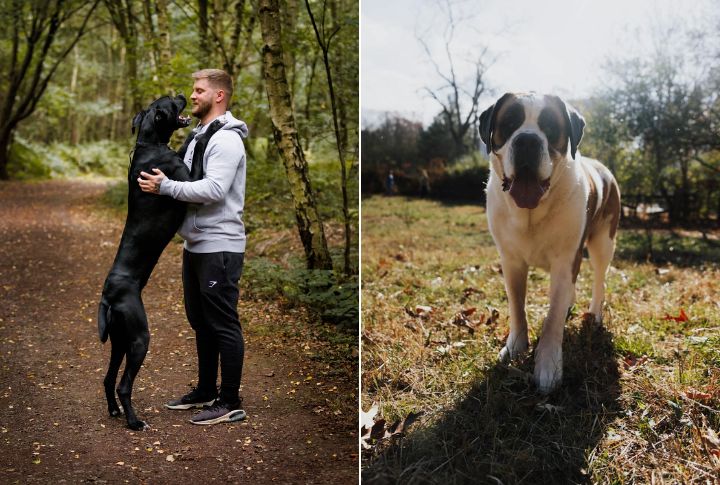
Great Danes thrive on companionship, often leaning in for affection and attention. Saint Bernards, though equally friendly, are a bit more independent in their approach. While both love family life, Danes tend to need more daily human interaction to stay content.
Exercise Needs
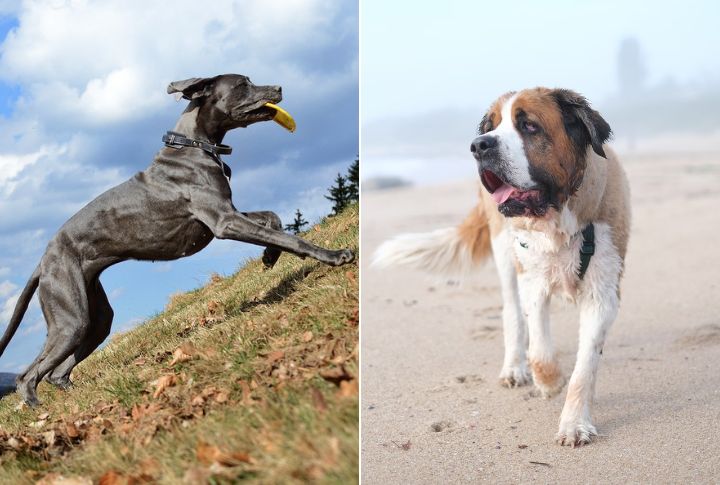
Many people assume giant breeds require constant activity, but the reality is different. Great Danes enjoy short bursts of energy but tire quickly. On the other hand, breeds like Saint Bernards were bred for endurance, so they tend to prefer slower, more consistent exercise.
Drooling & Grooming
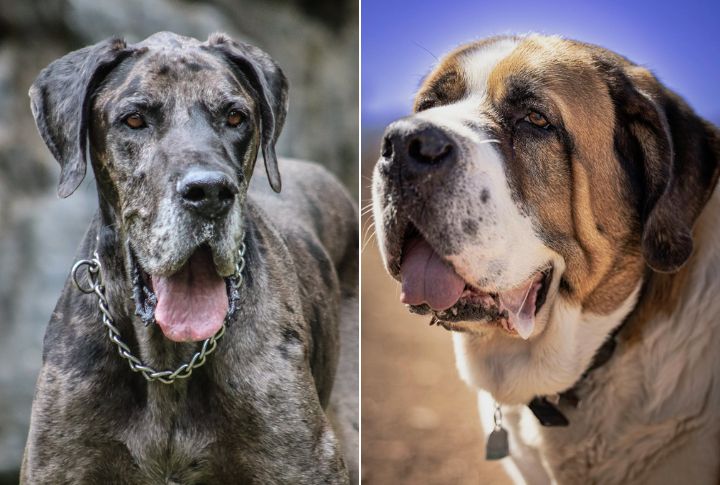
Thick ropes of drool hang from Saint Bernard’s jowls, dripping all over. As for Danes, they’re less messy but not immune. Grooming follows suit; Bernards shed heavily because of dense coats, which require frequent upkeep. Short-furred Danes offer an easier cleaning routine.
Size & Weight

Standing tall like a living statue, the Great Dane can reach up to 32 inches, towering over the sturdy Saint Bernard. However, when it comes to bulk, the Saint Bernard takes the lead, carrying more muscle and weight, sometimes tipping the scales at an impressive 180 pounds.
Lifespan & Health

Giant breeds have a tough time with aging. Great Danes typically live less than 10 years, with some struggling to reach eight. Saint Bernards live a bit longer, but both breeds are prone to heart disease and bloat. Regular veterinary care is key in helping extend their lifespans.
Trainability & Intelligence

Great Danes learn fast. However, they require consistent leadership; on the other hand, Saint Bernards process commands at a slower pace, often testing patience. Positive reinforcement ensures both breeds develop good manners before size makes training a battle.
Living Space Requirements
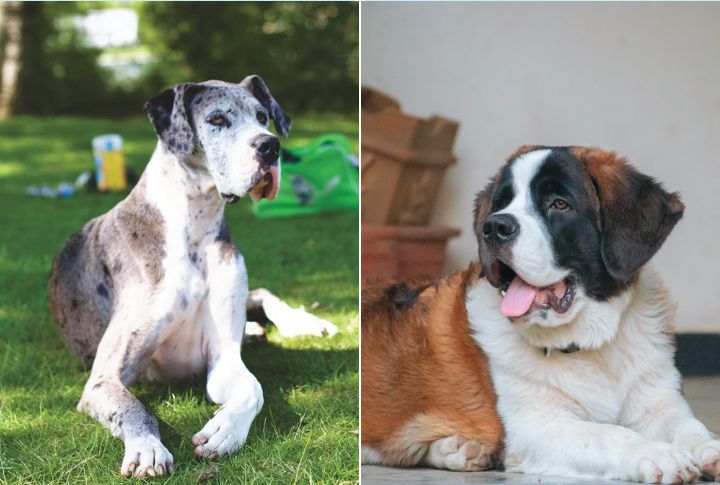
Apartment dwellers, beware! Great Danes need room to stretch those legs. Saint Bernards, surprisingly, handle smaller spaces better due to their calmer nature. However, both breeds thrive when they have access to open areas and regular outdoor breaks.
Socialization & Behavior With Strangers
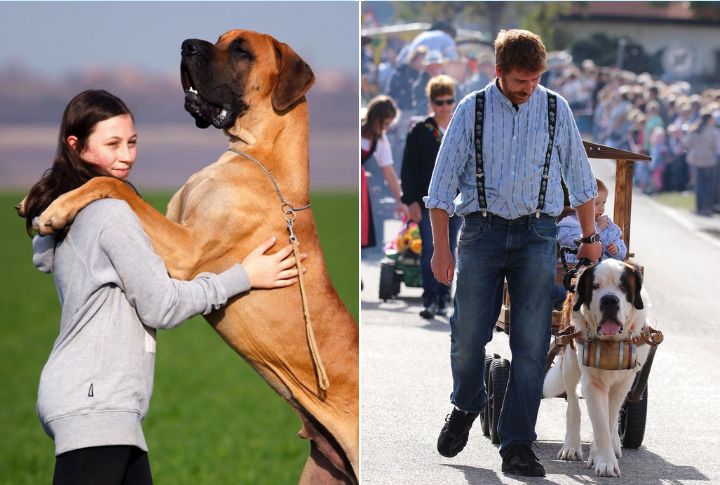
Imagine guests arriving. You’ll find a Great Dane investigating eagerly, meanwhile, a Saint Bernard remains calm with reserved curiosity. Danes embrace strangers faster, sometimes lacking caution. Bred for rescue work, Bernards remain watchful of unfamiliar faces.
Diet & Appetite
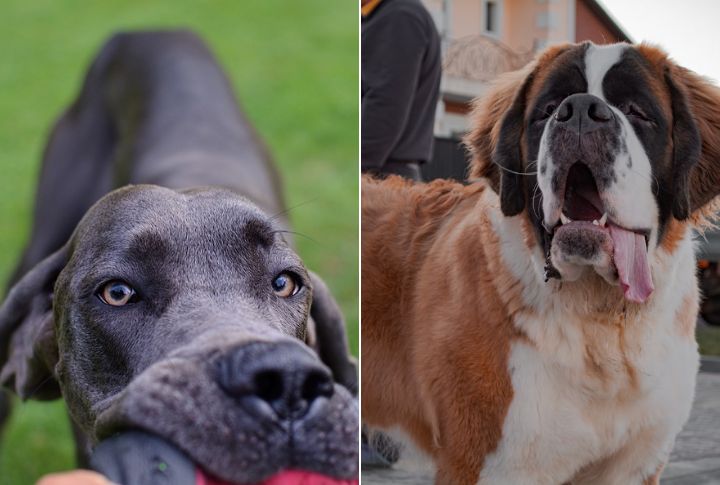
It’s not unusual for a meal to disappear in seconds—both of these dogs can put away huge portions. Great Danes need high-protein diets to support their lean muscle mass, while Saint Bernards require carefully managed portions to prevent excessive weight gain.
Family Compatibility

During a chaotic playdate, Saint Bernards stay mellow, barely blinking at bouncing toddlers. Great Danes, on the other hand, lean into the action—sometimes literally. Both breeds adore family life, though Danes might accidentally topple little ones in excitement.





